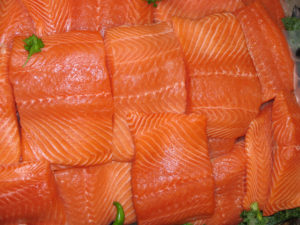U.S. Seafood Consumption Reflective of Aquaculture’s Growth in 2017
U.S. per capita seafood consumption increased by 1.1 pounds to 16 pounds in 2017, reaching the 16-pound mark for the first time in almost 10 years, the National Marine Fisheries Service announced recently in its “2018 Fisheries of the United States” report.

The 1.1-pound increase in consumption is due partly to the growth of responsible aquaculture, which has allowed for global seafood production to continue to grow. According to the United Nation’s Food and Agriculture Organization, aquaculture now represents more than half (53 percent) of global human seafood consumption, with global seafood production reaching a peak of 171 million metric tons in 2016. “With capture fishery production relatively static since the late 1980s, aquaculture has been responsible for the continuing impressive growth in the supply of fish for human consumption,” said the UN in its recently released “2016 State of World Fisheries and Aquaculture” report.
U.S. per capita seafood consumption is reflective of aquaculture’s growth, with four of the top six species — shrimp at 4.4 pounds, salmon at 2.4 pounds, tilapia at 1.1 pounds and pangasius at 0.71 pounds — predominately originating from aquaculture. The other two species among the top six are canned tuna at 2.1 pounds and Alaska pollock at 0.78, which only originate from the wild, reported the National Fisheries Institute.
“Part of our mission at GAA is to promote the consumption of responsibly sourced farmed seafood, so we are delighted to see more people are eating fish. We would encourage consumers to look for responsibly sourced seafood and the BAP logo on the label,” said GAA Executive Director Andrew Mallison.
As global seafood consumption continues to grow, so does Global Aquaculture Alliance’s Best Aquaculture Practices third-party certification program, which is expected to end 2018 at about 2,200 BAP-certified processing plants, farms, hatcheries and feed mills worldwide.
Though U.S. per capita seafood consumption witnessed a 7.4 percent jump in 2016, it has been relatively flat over the past three decades, ranging from a high of 16.6 pounds in 2004 to a low of 14.4 pounds in 2012, suggesting the need for more marketing to drive demand for seafood in the United States. U.S. per capita seafood consumption hasn’t seen a significant increase since the 1980s, when it leapt from 12.5 pounds in 1980 to 15 pounds by 1990.
Encourage people to eat seafood twice a week by pledging to the Seafood Nutrition Partnership’s 2019 New Year’s resolution.



